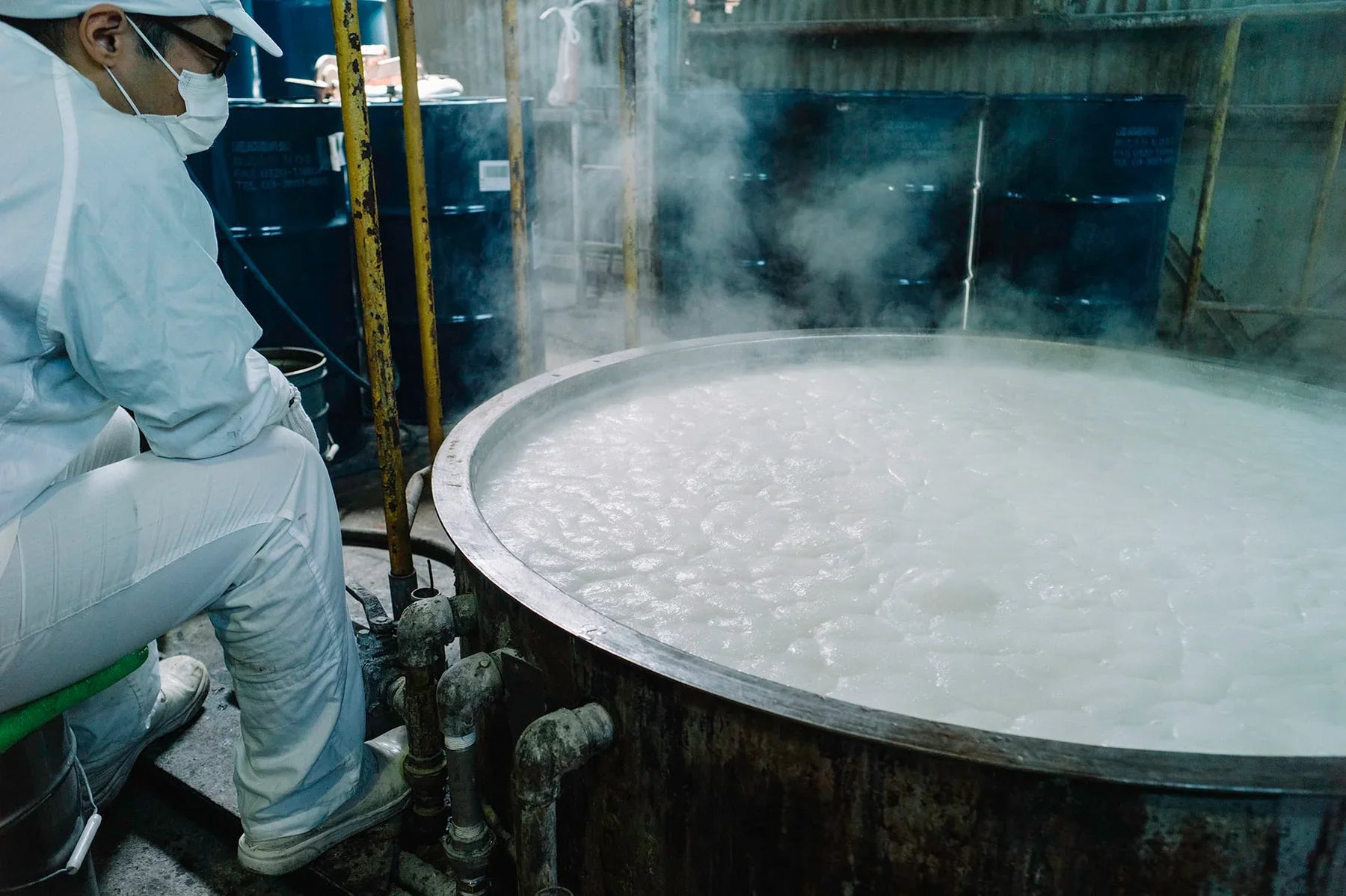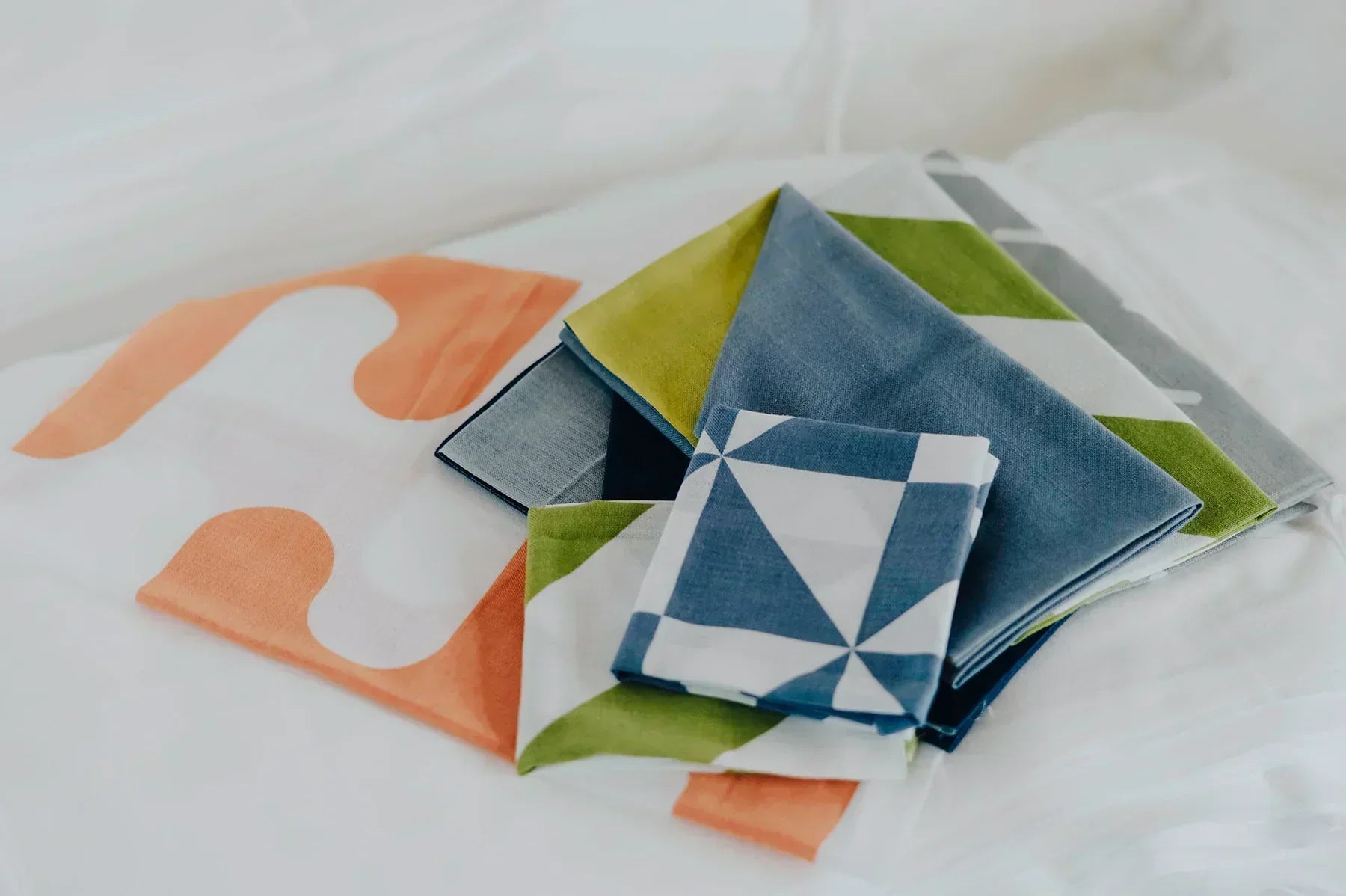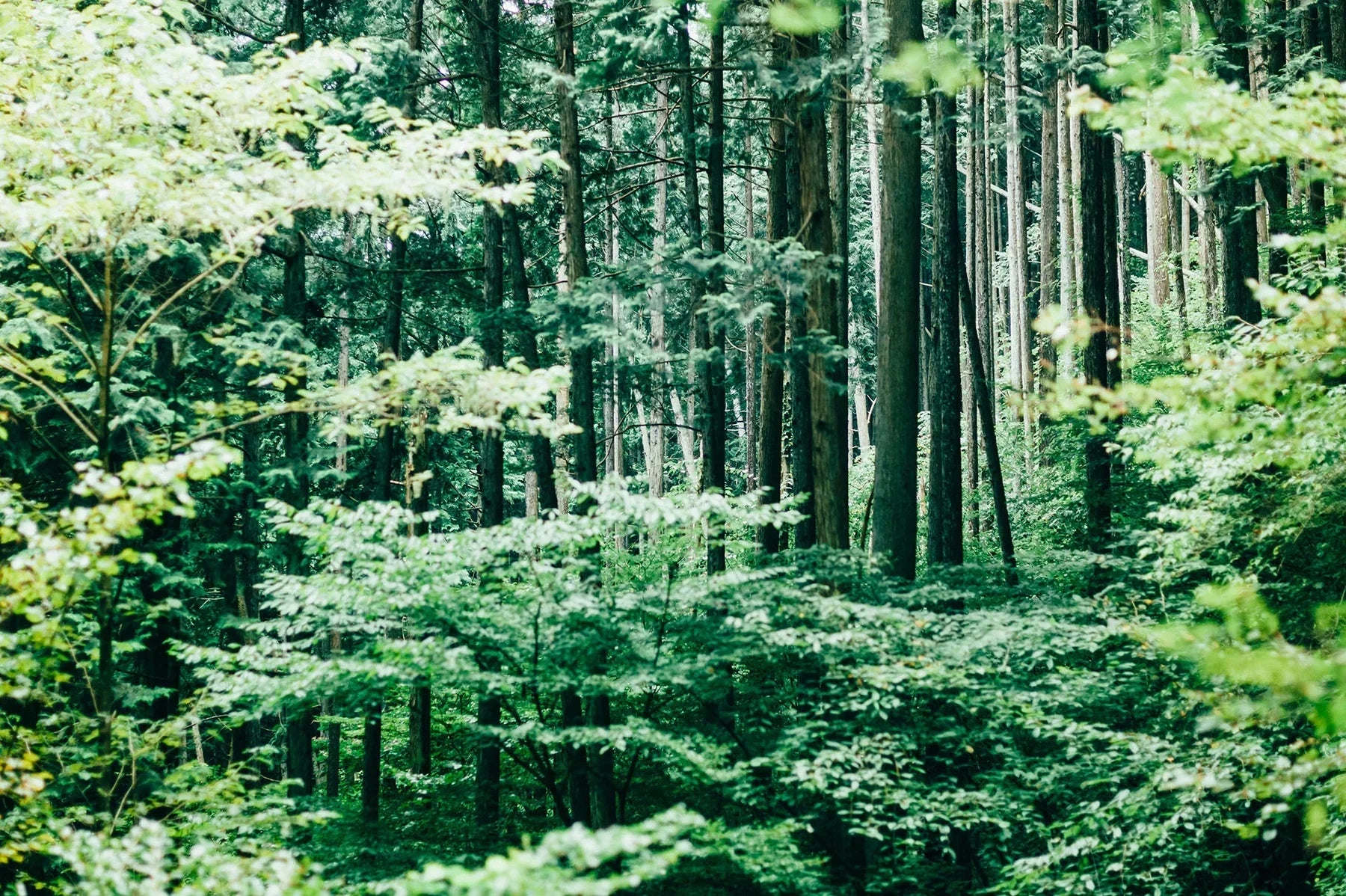
Skin care series created by the creator of Mana Soap
This is Yonago City in Tottori Prefecture. Facing the Sea of Japan, it is an area rich in seafood, but is also known as a land rich in nature, surrounded by famous peaks such as Mt. Oku-Daisen.
Along with the Alps, Oku-Daisen has long been known in the Chugoku region as a source of abundant water.


Susumu Seisakusho has been making skin care products in this area of famous water for many years.
Have you heard of the facial soap called "Mana Soap"?
It has gained a reputation for its excellent peeling* effect, which removes old keratin from the surface of the skin, and it is still immensely popular. Word of mouth continues to spread among people who suffer from adult acne and rough skin, and it is a hit product with cumulative sales exceeding 2.3 million units*.
Its high quality can be seen from the fact that it is now widely sold at renowned beauty clinics and dermatology clinics across the country.
This time, we asked Susumu Seisakusho, a group of specialists in beauty product development, to develop an original product for Standard Products.

First, let's introduce the face wash soap. This is an original soap made using the "frame-kneaded cold process" method, which is a long-term, low-temperature aging process that makes the most of the knowledge and experience gained from making Mana Soap.
There are two main methods for making soap: machine kneading and frame kneading.
First, the characteristic of machine kneading is that most of the processes are done by machine, making mass production possible. Approximately 95-97% of the total ingredients are soap base, and it is generally used for hand washing soap.
In contrast, most of the work involved in making framed soap is done by hand. Although the production volume is lower than that of machine-made soap, as only about 75% of the soap is soap base, the remaining part can be filled with plenty of beauty ingredients. This makes it suitable for making distinctive soaps, but making framed soap is not easy.


This is the process called "saponification." First, natural ingredients such as oils are mixed together. This is a delicate process that requires changing the manufacturing conditions depending on the temperature and humidity of the day, but experienced craftsmen carefully mix the ingredients.
After that, the mixing process begins. There are two methods for this process: the "hot process," in which the ingredients are heated at high temperatures, and the "cold process," in which no heat is applied to the ingredients.
The advantage of the hot process method is that it allows for efficient product production as it can be produced in a short amount of time.
The cold process method takes time and effort to produce, but it has the advantage that the high-quality ingredients are less likely to break down. Susumu Seisakusho continues to make soap using the cold process method, which involves long-term maturation at low temperatures.
Many beauty ingredients, such as vegetable oils, plant extracts, and natural pigments, are sensitive to high temperatures.
Cold process soaps are less susceptible to heat damage and can properly incorporate heat-sensitive beauty ingredients. In addition, the moisturizing ingredient glycerin can also be trapped inside the soap, so the key point of facial soaps made with the cold process is that they leave your skin feeling moisturized after washing.


The water used in our soap comes from Mt. Daisen's natural springs. It is a luxurious, clear, soft water that is delicious enough to drink.
The stirring process is necessary to thoroughly mix the beauty ingredients, but the cold process method uses only the heat of reaction that occurs during hydrolysis, a process called "saponification reaction."
It is a delicate process in which a difference of just 1 to 2 degrees Celsius in temperature can change the final product, and depending on the material, mixing can take longer than six hours, making it an extremely time-consuming process.
The soap base that has been made over such a long time is then poured into a mold and left to cool and harden for a long time. The name "framed soap" comes from this process.


After it cools and hardens, it is cut to size, dried and polished to complete the soap. It takes about a month to complete this process, making it a very time-consuming process.
Here is the face wash soap that was finally completed. It comes in three types: peeling*, moisturizing, and pore cleansing.

Not only is it a framed soap made using the cold process method mentioned above, but the oils and fats * used are 100% plant-based.
In addition, it contains no palm oil*, coconut oil*, or olive oil. Blended with hyaluronic acid it contains ingredients that thoroughly moisturize your face while washing it, so it doesn't leave your skin feeling tight after washing, which is a nice bonus.
This facial soap is the product of Mana Soap's manufacturing know-how. It is a proud product that we would like you to try.
In recent years, Susumu Seisakusho has been focusing on developing beauty face masks.


By creating a high-quality facial soap like Mana Soap, requests for original products began pouring in from many companies. Now, we are spreading our soap-making know-how to a variety of beauty products.
Of particular note among these are beauty face masks. The company's product development, which makes use of its expertise in skin care products, has attracted attention within the industry, and the company now manufactures OEM products for a number of well-known companies.
The product created for this Standard Products project is a face mask packed with luxurious beauty ingredients.


The sheets are made of high-quality nonwoven fabric called "Asahi Kasei Corporation's Bemliese®." Although it is a highly biodegradable* natural fiber, it has excellent liquid absorption and retention properties. This allows the fabric to hold plenty of beauty ingredients. It also feels surprisingly close to the skin when applied.
Furthermore, the moisturizer uses Izumo Yumura hot spring water, which is famous for being a skin-beautifying hot spring, and the ingredients penetrate deeply into the stratum corneum.
It also contains plenty of beauty ingredients that are suited to each of the three skin types.
For sensitive skin: Dense CICA* ingredients + organic lavender essential oil*
For dull* skin: Vitamin C derivative* + arbutin* + prune hydrolyzate*
For dry skin: Niacinamide* + collagen* + jojoba oil*
Once you use it, you will realize how comfortable it is.
Also part of the same series are clay soap and lip balm.


This clay soap is made from Okinawa marl.*and Moroccan fine clay*This facial cleanser combines these ingredients to create a dense, foamy foam that is surprisingly elastic and effectively absorbs dirt from pores.
And finally, lip balm. The main ingredients are rice bran * and beeswax.*, Camellia oil from Goto*It is a dense moisturizing formula containing moisturizing ingredients derived from rice.*It is a gentle lip balm.
This skin care series is made up of products that Shin Seisakusho, a specialist in beauty research, has carefully selected. Please give them a try.
*CICA: Centella asiatica extract (skin conditioning ingredient) / Lavender essential oil: Lavender oil (fragrance) / Dull skin: Skin that looks dull due to dryness / Vitamin C derivative: Ascorbyl glucoside (skin conditioning ingredient) / Arbutin (skin conditioning ingredient) / Prune hydrolyzate (skin conditioning ingredient) / Niacinamide (moisturizing ingredient) / Collagen: Water-soluble collagen (moisturizing ingredient) / Jojoba oil: Jojoba seed oil (moisturizing ingredient) / Peeling: By washing the face / Palm oil: Cleansing ingredient / Coconut oil: Palm oil (cleansing ingredient) / Olive oil: Olive fruit oil (cleansing ingredient) / Rice bran: Rice bran oil: Emollient ingredient / Beeswax (thickening agent) / Camellia oil: Camellia seed oil (moisturizing ingredient) / Marl: Sea silt (adsorption ingredient) / Moroccan fine clay: Moroccan lava clay (adsorption ingredient) / No additives: preservatives, petroleum-based surfactants, synthetic fragrances, mineral oils, synthetic colorings, synthetic emulsifiers / Total sales of over 2.3 million units: as of September 2023 / For more information on the biodegradability of Asahi Kasei Corporation's Bemliese®, click here F03X290
LATEST STORY

Laundry detergent made using the traditional kettle cooking method
This laundry detergent is made with pure soap, paired with a fabric softener that leaves a natural finish. Our goal was to create a product that strikes the right balance—easy to use, environmental...
Read more
Tenugui dyed using a technique unique to Japan
Sakai City, Osaka Prefecture, is a major production area for tenugui. Takeno Senko is the only company that can make double-sided roll-printed tenugui. Craftsmen carefully dye the textured Japanese...
Read more
Miscellaneous goods made from domestic wood and thinned wood
What image comes to your mind when you hear the word "deforestation"? While often associated with environmental loss, in Japan, sustainable forestry involves the careful use of thinned wood to main...
Read more